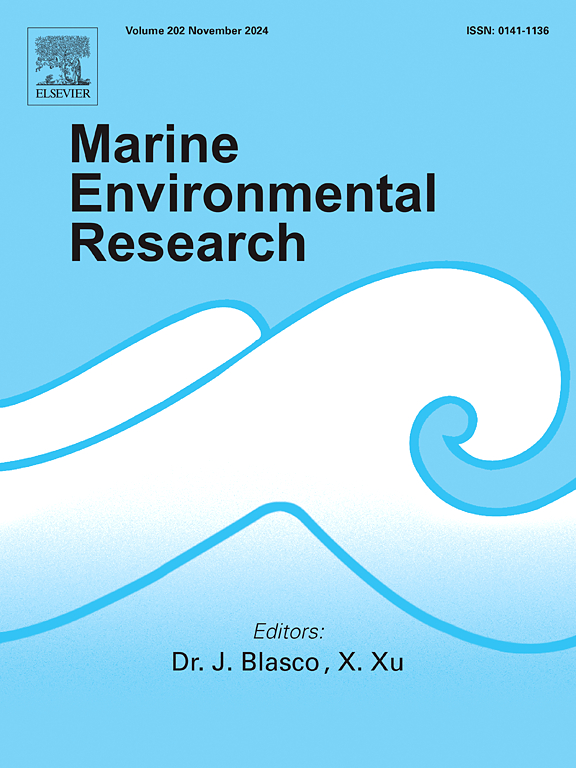Between shells and seas: Effects of ocean acidification on calcification and osmoregulation in yellow clam (Amarilladesma mactroides)
IF 3
3区 环境科学与生态学
Q2 ENVIRONMENTAL SCIENCES
引用次数: 0
Abstract
The decline in ocean pH due to rising CO2 levels is a critical factor impacting marine ecosystems. Ocean acidification (OA) is expected to negatively affect various organisms, particularly those with mineralized structures. While the effects of OA on the calcification of shells and exoskeletons are documented, the impact on homeostatic processes, such as osmoregulation, is less understood. Osmoregulation is vital for maintaining water and salt balance within marine organisms, crucial for their survival and physiological functions. Acidification may alter ion exchange mechanisms, affecting the regulation of ions. In this study, we evaluated the effects of intermediate OA (pH 7.6) with or without hypersaline stress (35‰) on calcification and osmotic balance biomarkers in the bivalve Amarilladesma mactroides after 96h of acute exposure. We found that pH did not affect hemolymph osmolality or extracellular Ca2+ concentration. However, OA impaired the bivalve's ability to maintain its mineralized structures by decreasing Ca2+-ATPase enzyme activity in the mantle. The increase in carbonic anhydrase activity indicated a specific response to maintain acid-base balance in the tissue, i.e., compensating for the effects of acidification by neutralizing CO2 accumulation and stabilizing internal pH. In the gills, both enzymes showed increased performance under higher salinity and reduced pH. Exposure to less alkaline pH inhibited carbonic anhydrase and Na+/K+-ATPase activity, potentially affecting the regulation of essential inorganic osmolytes.

求助全文
约1分钟内获得全文
求助全文
来源期刊

Marine environmental research
环境科学-毒理学
CiteScore
5.90
自引率
3.00%
发文量
217
审稿时长
46 days
期刊介绍:
Marine Environmental Research publishes original research papers on chemical, physical, and biological interactions in the oceans and coastal waters. The journal serves as a forum for new information on biology, chemistry, and toxicology and syntheses that advance understanding of marine environmental processes.
Submission of multidisciplinary studies is encouraged. Studies that utilize experimental approaches to clarify the roles of anthropogenic and natural causes of changes in marine ecosystems are especially welcome, as are those studies that represent new developments of a theoretical or conceptual aspect of marine science. All papers published in this journal are reviewed by qualified peers prior to acceptance and publication. Examples of topics considered to be appropriate for the journal include, but are not limited to, the following:
– The extent, persistence, and consequences of change and the recovery from such change in natural marine systems
– The biochemical, physiological, and ecological consequences of contaminants to marine organisms and ecosystems
– The biogeochemistry of naturally occurring and anthropogenic substances
– Models that describe and predict the above processes
– Monitoring studies, to the extent that their results provide new information on functional processes
– Methodological papers describing improved quantitative techniques for the marine sciences.
 求助内容:
求助内容: 应助结果提醒方式:
应助结果提醒方式:


